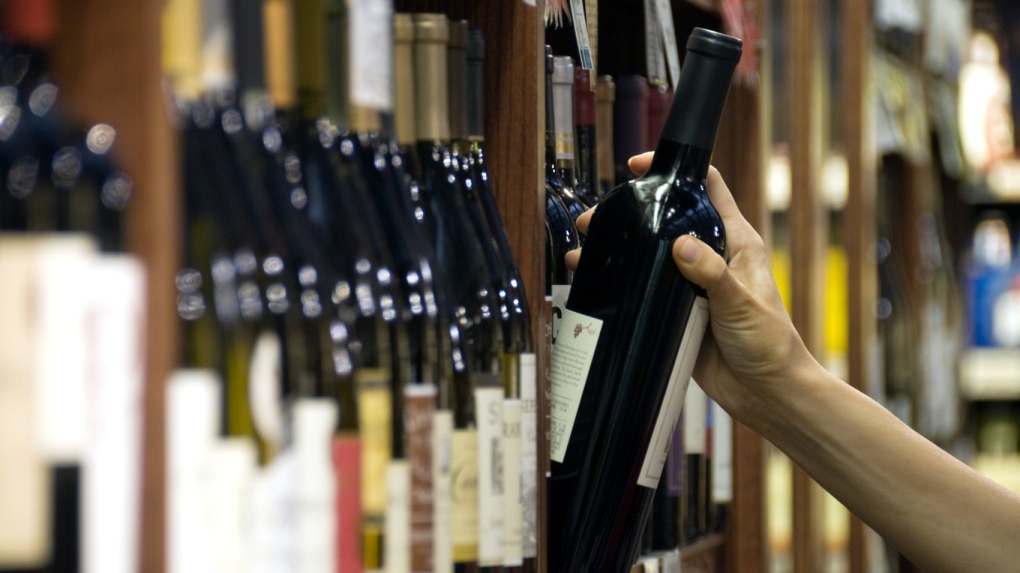B.C. alcohol consumption hits all-time high, with Interior and Vancouver Island leading
 A study suggests the average Canadian drinker receives more than one-tenth of their daily recommended calories from alcoholic beverages. (magnetcreative / Istock.com)
A study suggests the average Canadian drinker receives more than one-tenth of their daily recommended calories from alcoholic beverages. (magnetcreative / Istock.com)
British Columbians drank more alcohol during the first year of the COVID-19 pandemic than at any other time in the past 20 years of available data, according to the latest analysis from the Canadian Institute for Substance Use Research.
B.C. residents over the age of 15 drank the equivalent of 547 cans of beer (five per cent alcohol) or 104 bottles of wine (12 per cent) per capita between April 1, 2020 and March 31, 2021, according to the institute at the University of Victoria.
In pure alcohol terms, the total amounts to 9.32 litres of ethanol per capita, the highest level of alcohol consumption recorded since the institute started tracking the data in 2001.
"This tells us the higher levels of consumption seen in the first few months of COVID were not the result of stockpiling, but of an overall increase in drinking sustained over the year," said CISUR director Dr. Tim Naimi in a statement Wednesday.
The institute says that although liquor consumption at bars and restaurants fell significantly – 60 per cent and 46 per cent, respectively – the drop was more than made up for by the increase in private liquor store sales, which accounted for 55 per cent of all alcohol sold in the province.
"It has never been easier to buy alcohol in B.C., and we know increased availability of alcohol leads to people drinking more," said Naimi.
The institute says the B.C. government's relaxation of alcohol regulations during the pandemic, including expanded liquor store hours, restaurant off-sales and home delivery services, "have certainly played a role in these increases."
The B.C. Interior saw the highest rates of pandemic alcohol consumption at 13.96 litres of pure alcohol per capita, followed by the Vancouver Island region with 11.54 litres.
The Fraser Health region saw the lowest consumption rates with an average of 7.09 litres per capita, while the Vancouver Coastal Health region averaged 7.75 litres and the Northern Health region averaged 10.78 litres.
"In the past, some regions have pointed to tourism as a reason for above-average consumption rates, the assumption being that visitors accounted for a good chunk of alcohol purchases," said Naimi. "Given the fact that B.C. saw many fewer tourists in the summer of 2020, this theory doesn’t appear to hold water."
There were 6,208 alcohol outlets in B.C. as of March 31, including restaurants, bars and stores, according to the institute. That marks a decrease of 1,719 venues over 2019-20 numbers, due to a large decrease in the number of bars and restaurants that were in active operation in any given month, according to the CISUR.
The researchers say there has been a 160 per cent increase in the number of private liquor stores in the province since 2001, with an increase of nearly 50 in the past year.
The ratio of private to government-owned stores has increased from 2.5:1 to 7:1 over the past 20 years, and private liquor stores now outnumber bars in B.C. for the first time ever, according to the data.
The institute's research, which is supported by Health Canada, shows that beer is still the beverage of choice for the majority of British Columbians, followed by wine, spirits and coolers.
CTVNews.ca Top Stories

Sparks fly as MPs question minister on pension implications of proposed election date change
Sparks flew at a parliamentary committee Thursday as MPs questioned Canada's democratic institutions minister about a widely opposed provision in electoral reform legislation that seeks to delay the next fixed election date by one week.
'There is no electricity': Canadian travellers in Cuba urge caution in hurricane's wake
Cuba's power grid was knocked out by Hurricane Rafael, which ripped across the country as a Category 3 storm. In western Cuba, it toppled buildings and pushed 50,000 people to find shelter elsewhere. Cubans were already enduring rolling blackouts due to energy shortages.
Three charged in One Direction singer Liam Payne's death
Three people have been charged in relation to One Direction singer Liam Payne's death in a fall from his Buenos Aires hotel balcony last month, Argentine authorities said on Thursday.
RCMP already 'on high alert' for potential wave of migrants after Trump election
Canada's federal police force has been preparing for months on a contingency plan for a potential massive influx of migrants across the border following Trump's promise of 'mass deportations' of millions of undocumented immigrants in the U.S.
'There was no stopping this baby from coming': Woman gives birth while aboard Newfoundland ferry
A young family from Codroy Valley, N.L., is happy to be on land and resting with their newborn daughter, Miley, after an overwhelming, yet exciting experience at sea.
Volkswagen models recalled for airbag safety precaution
Recall notices have been issued for some Volkswagen models from 2006 to 2019 for airbag safety issues.
Canmore wildlife and landscape defender Karsten Heuer dies peacefully at 56
Canmore conservationist Karsten Heuer, who was a biologist, park ranger, author and activist, has died.
America votes: How celebrities are reacting to Trump's decisive victory
Celebrities from Hulk Hogan to Ariana Grande are sharing their reactions to the U.S. election, which will see Donald Trump return to the White House.
3 Winnipeg police officers charged with breach of trust, theft
Three members of the Winnipeg Police Service have been charged with breach of trust, obstruction of justice and theft following a lengthy investigation


































